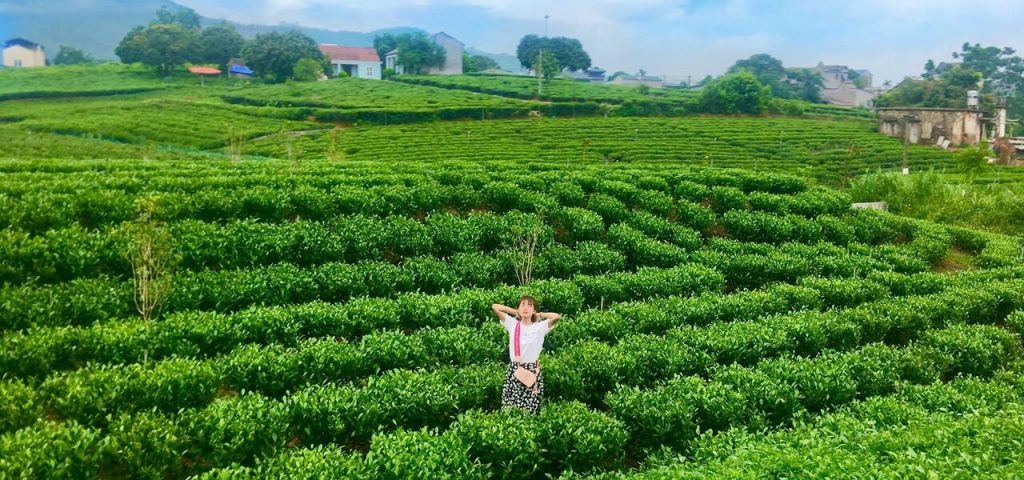This post is also available in:
Tiếng Việt (Vietnamese)
In the once-impoverished region of Binh Son commune (Song Cong City, Thai Nguyen Province), local farmers are learning to develop community-based tourism, transforming their agricultural labor into meaningful experiential products. Guided by local government initiatives and supported by cooperative efforts and community engagement, the ecotourism model at Ghenh Che Lake is emerging as a pioneering example of sustainable rural development—rooted in the hands and agency of farmers themselves.
From Marginalized Lands to a New Vision
Located in Binh Son commune, Song Cong City, the hamlets of Tien Tien and Carim were historically isolated and underdeveloped in terms of both economy and infrastructure. Home to over 90 households primarily dependent on agriculture and forestry, life in these areas was peaceful yet marked by scarcity. However, Ghenh Che Lake—a pristine natural attraction nestled amid verdant tea hills—had long held untapped tourism potential.
Transformation began with provincial and municipal directives that promoted the development of a community-based ecotourism model around the lake. This strategy aimed to integrate economic development with landscape preservation and cultural heritage. With this new orientation, residents—long accustomed to tilling the land—embarked on a journey to learn tourism, initiating a challenging yet hopeful transition in livelihoods.
Learning Tourism from Their Own Land
Lacking prior experience in hospitality or services, Tien Tien villagers had to begin with the basics. They learned how to welcome guests, lead tours, and organize tea-picking and tea-roasting activities—routines once confined to daily labor in the fields. Pioneers like Mr. Hiep and Mr. Chinh invested in stilt-house homestays, landscaped their surroundings, and drew inspiration from successful tourism models in other regions to adapt and implement locally.
Crucially, the Ghenh Che model follows the concept of “experiential agriculture”—wherein farmers maintain their traditional livelihoods but elevate the value of their work by integrating it into tourism experiences. Tea-pickers become guides; tea gardens transform into hands-on classrooms; stilt houses evolve into rustic, culturally-rich accommodations.
Self-Reliance: Transforming the Village from Within
Rather than depending solely on external investment, it is the community itself that has driven the change. Residents voluntarily planted flower-lined roads, contributed funds and labor to reinforce the lakeshore, and beautified their village environment. Once plagued by doubt and inertia, Tien Tien hamlet now stands as a vivid illustration of grassroots-driven tourism development.
Despite initial challenges—such as hesitation to contribute financially and a lack of service skills—villagers gradually adapted. They began to witness tangible benefits: guest visits increased, income rose, and change became visible. Most importantly, community awareness transformed—from improved environmental sanitation to the realization that “to go far, we must go together.”
A Sustainable Path Built on Community Strength
What is most valuable about the Ghenh Che model is not merely the arrival of tourists, but the emergence of a new rural perspective. Here, locals are not passive laborers serving the tourism industry, but active creators of tourism products, services, and narratives. They design models, coordinate activities, and above all, rediscover value in work that once seemed ordinary.
As such, the community-based tourism initiative at Ghenh Che Lake is more than a local development strategy; it is a testament that—with proper guidance, initial state support, and above all, strong community agency—Vietnamese rural areas can build sustainable, culturally-rich, and nature-harmonious tourism models.









